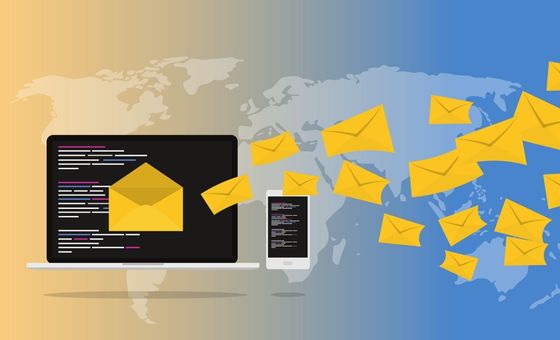Mailing and e-mailing, what is the difference?

In 2021, more than 319 billion emails were sent and received worldwide. The forecast for 2025 is 376 billion. This indispensable tool for any marketing strategy has therefore grown exponentially since its appearance. How can it be used to enhance the value of your business and enable it to grow? In this article, we propose to show you the differences between mailing and e-mailing and how to use these campaigns to promote your company.
What is mailing?
A mailing is an action that a company or individual can take to send documents, texts, images, files or videos to one or more recipients. It is important to distinguish between paper mailings, which are sent by post – otherwise known as direct mail – and electronic mailings, which are sent by e-mail.
Paper mailing
Paper mailing requires a physical medium and the recipient’s postal information, name and address. There are also certain costs associated with the processing of paper, since the mailing can range from a simple letter to a flyer, brochure, newsletter, magazine or leaflet. It is therefore possible to use cardboard materials depending on the range of services or products you offer.
Direct mail is widely used by many brands to send mail to a large number of recipients during an advertising campaign, to present their products, their company, new products, etc.
The medium must be carefully worked out so that it can correspond to the greatest number of its prospects. For more elaborate media, it may be advisable to use a communications agency that can embellish the graphics and make the content attractive.
The dematerialised mailing
The dematerialised mailing corresponds to the launch of what is called an email campaign which takes place during a marketing or communication campaign. It is a common process in today’s companies as it is a very efficient and less time-consuming way of communication than the paper format. In terms of ecology, it is difficult to measure the impact of paper mailings compared to dematerialised mailings. It is therefore not always a criterion for choosing between the two.
To carry out an e-mail campaign, it is necessary to automate the sending process. You therefore need to build up a database containing the information of your prospects or recipients, at least their surname, first name and e-mail address. This will enable you to personalise your campaign. Next, you will need to write a standard e-mail that will be reused by changing only the name of the recipient. The content should be attractive, with nice designs, and be in line with the purpose of the campaign.
Secondly, you can schedule your mailing campaigns in advance by planning the date and time of the e-mail distribution.
Finally, you will be able to study the statistics of your campaigns to measure their impact and success rate. In this case again it is recommended to use a communication agency specialised in e-mailing strategy which will allow you to understand your weak points in terms of mailing strategy, and to improve them with better marketing tools.
What is emailing?
Emailing is the act of launching an email campaign during a marketing or communication campaign. As you can see, emailing is actually dematerialised mailing. Why are two terms used? Emailing is specific to the use of electronic mail, whereas mailing encompasses other types of canvassing. So emailing is a mailing technique, but mailing is not an emailing technique. Do you follow? Therefore, you can talk about an emailing campaign as well as a mailing campaign. The principle is the same. You will first have a marketing targeting phase by building up a database. It is advisable to have a prior contact base. Next, you personalise a text to your target, notably with designs. Finally, you programme your campaign using marketing automation techniques.
Be careful with the preparation of your mails, otherwise they could end up in spam or undeliverable. This would greatly reduce the click-through rate and therefore your visibility.
Why using paper mailings?
Direct mail or postal mailing seems to have been overtaken by e-marketing. However, the paper format allows for a lot of creativity and imagination. It is also suitable for a large proportion of the population who prefer the paper format to the computer. It is also considered less aggressive than the promotional emails we receive, but especially the number of spam mails.
Why use emailing or dematerialised mailing?
It is an interesting tool when you want to personalise your offer. You can select your audience and contact them. You can also personalise the emails. The biggest advantage of paperless mailing is that it is an optimal marketing technique. It is fast, inexpensive and can be delivered almost anywhere.
However, you need to pay attention to the layout of the email by creating it in a responsive design to allow good reading on mobile phones and an attractive format. Otherwise, recipients may consider your email as spam.
Our expertise in mailing and e-mailing at your service
Our communication experts will suggest the best strategy for your direct or indirect marketing campaign. We will assist you in all the segmentation and selection of marketing targets, right down to the design of the paper format or digital e-marketing. We have the experience and client relationships to help you achieve a return on investment in your communication campaign. Our aim is to help you attract new customers and retain existing ones through respectful and creative techniques. Finally, we will study the statistics of your campaigns using data such as click-through rates, reactivity rates or open rates to help you manage your prospecting strategy.
